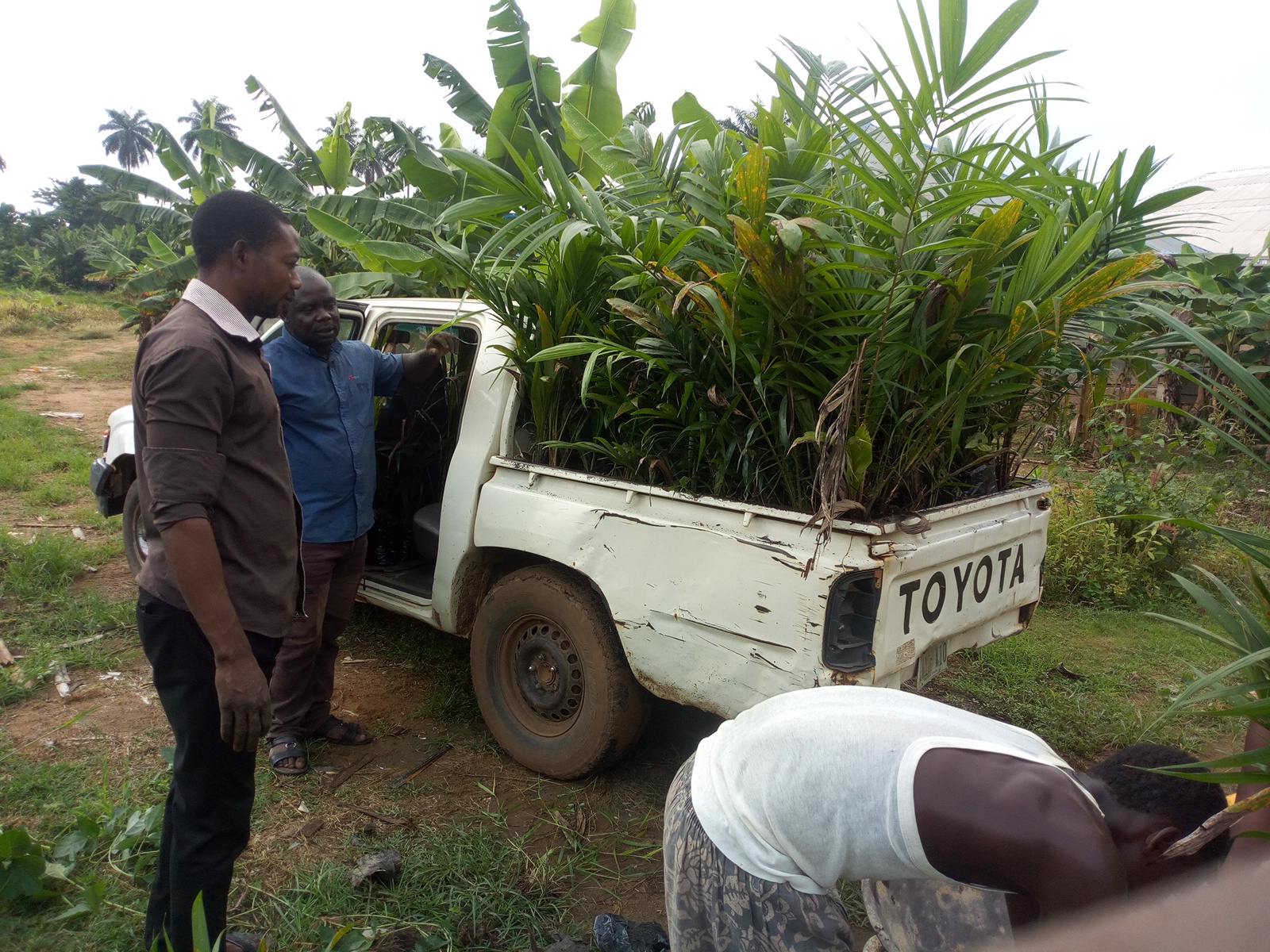Oil palm is a gross feeder plant that requires more nutrients than other average plants. It requires an annual rainfall of 2000mm. Optimum yield can be obtained in areas with a maximum average temperature of 29-33oC and a minimum average temperature of 22-24 o C. It requires a minimum of 5 hours of sunlight per day for optimum yield. The crop grows well in a deep, moist, and well-drained medium-textured soils rich in humus content.
To plant the oil palm sprouted nuts, you need polythene bags. The advantage of using polythene bags is because reduce transplanting shock (there is no root damage), ensure that the seedlings are of goof vigour with a better root system. When the field condition is not favourable, the seedlings can be retained in the nursery for a longer time. Also, using polythene makes watering, weeding of unwanted seedlings easy and also enhance early fruit-bearing. Selection of healthy seedlings is more easily accomplished when transplanting. The polybags must be UV resistant, preferably black. It must be filled with topsoil and compost in a 50:50 ratio. Corncobs, decomposed sawdust, rice hull, and other organic materials can also be used as a growing medium to reduce the weight of the half-filled polybag and improve drainage and soil fertility.
Watering of the seedling is an important operation in Oil Palm Nursery Management. The water requirement varies with the age of seedlings. During 0 – 2 months of planting, watering should be done daily (early morning or evening). At 2 – 4 months, watering can be done one-day interval, and at 6 – 8 months, the watering can be done two-day interval.
To transplant Oil palm seedlings, it is often advisable that the seedlings stay for a minimum of 12 months in the nursery to reduce mortality or any form of attack on the field. The root system of a 12 months old palm will have developed, therefore, seedlings should be removed from the nursery by lifting with a spade and the roots carefully detach. When removing the seedlings, warn your labour or staffs never to lift the seedlings from the soil by pulling the leaves or stem. Transplanting should be done only when the land preparation has been completed. But if the land preparation is not yet completed, the seedlings should be kept in the shade and out of the sun. Ensure that you transplant as soon as the rain becomes steady.
Fertilizer application should begin 3 months after planting. The crop is a heavy feeder that requires regular, complete fertilizer. You can read our Fertilizer Management in Oil palm to know the basic nutrients requirement of Oil palm and its application.




